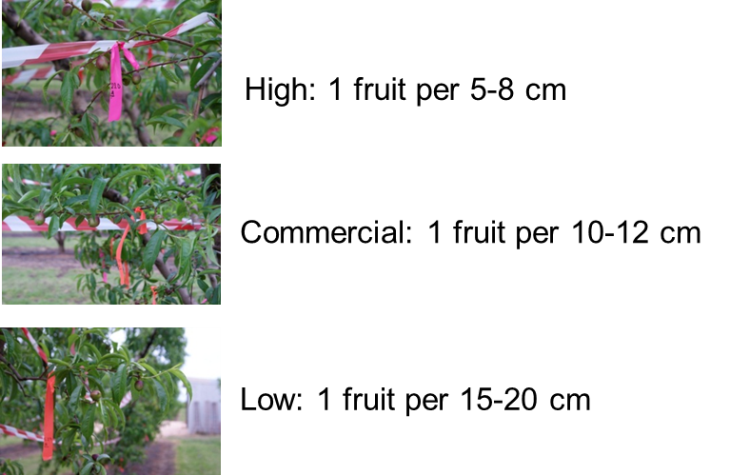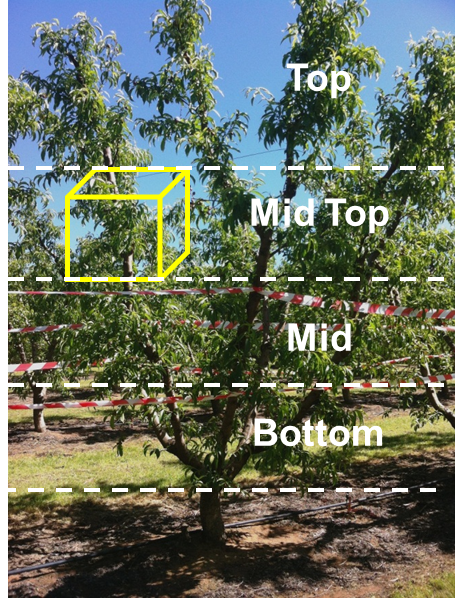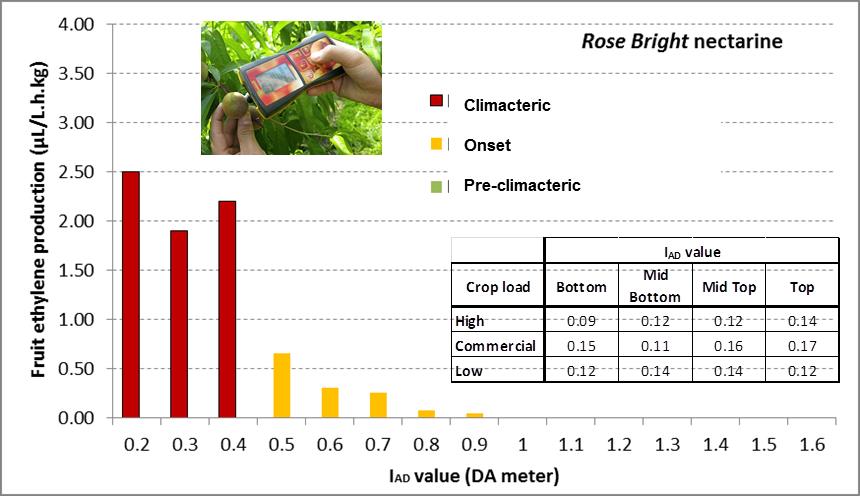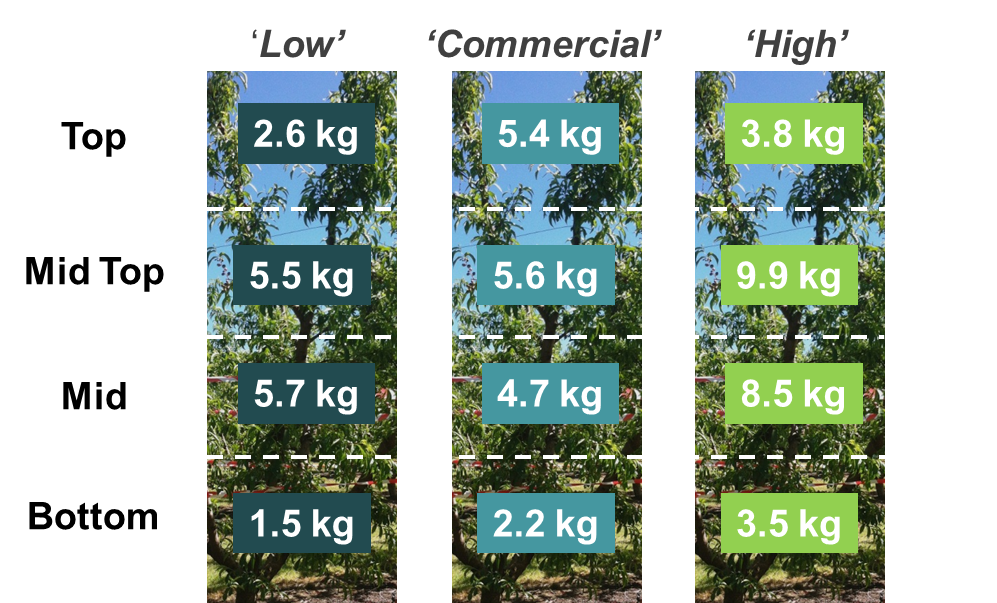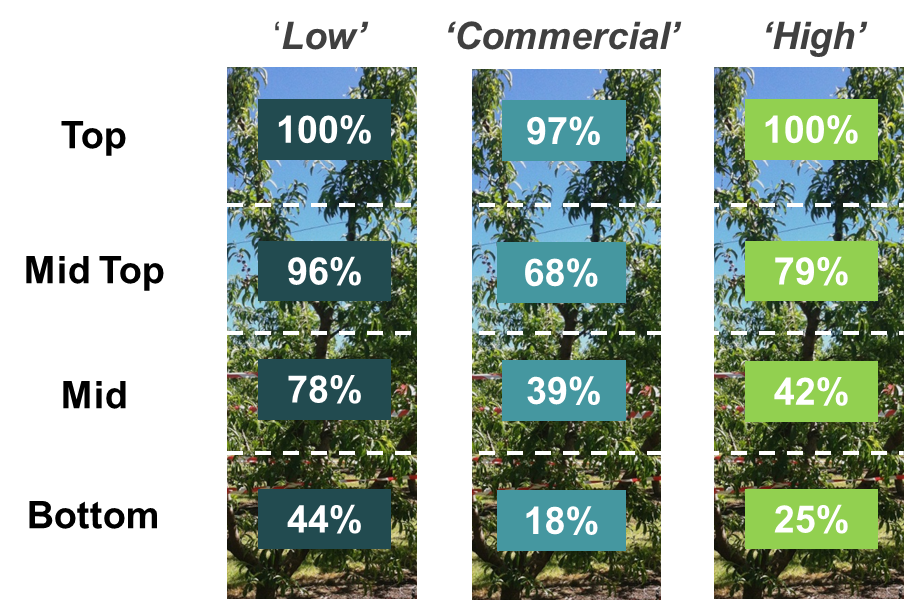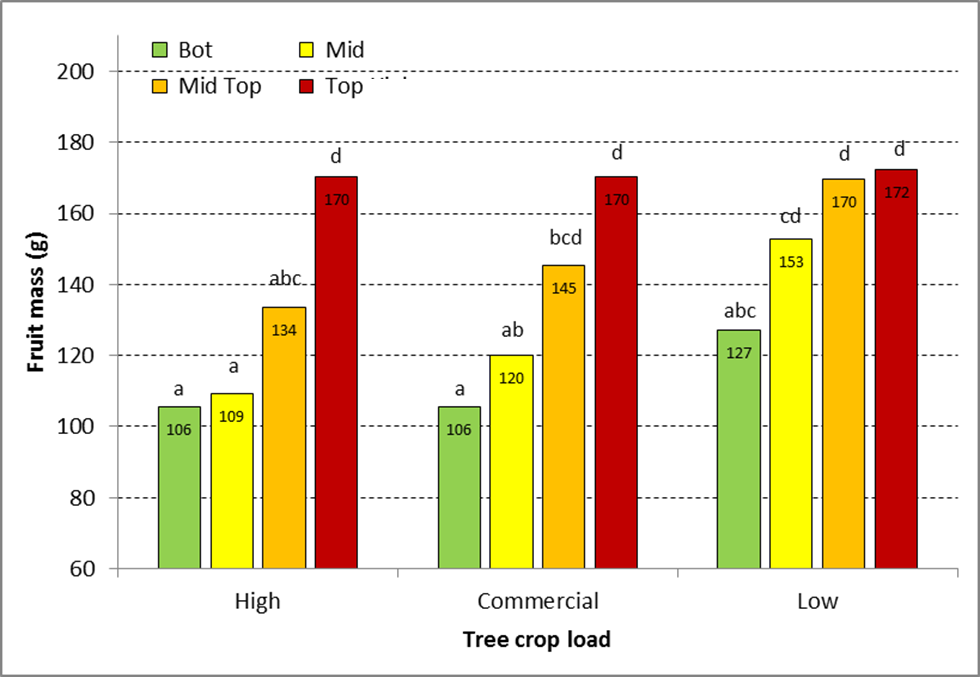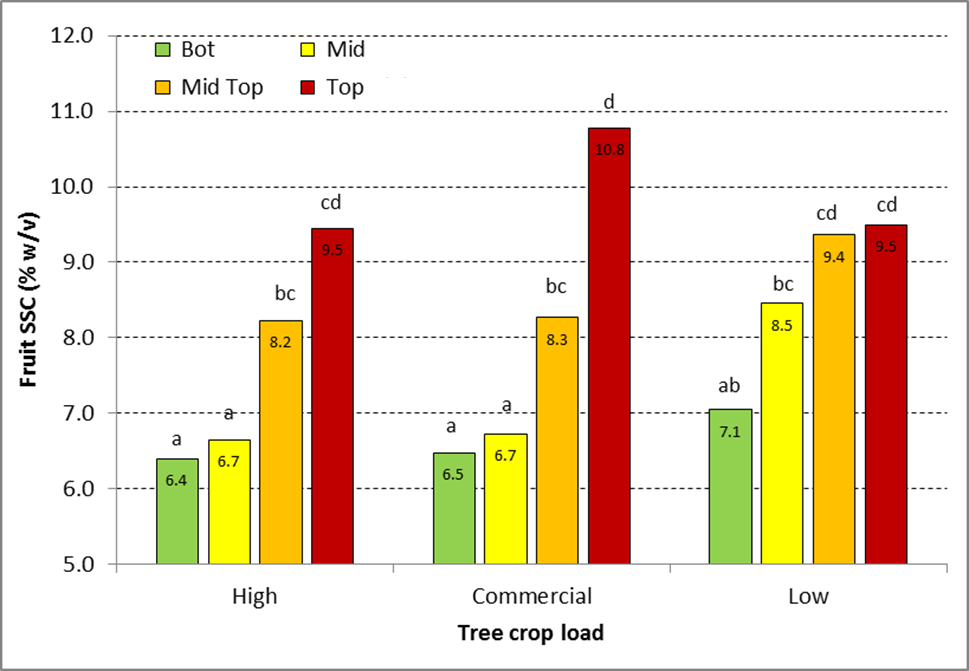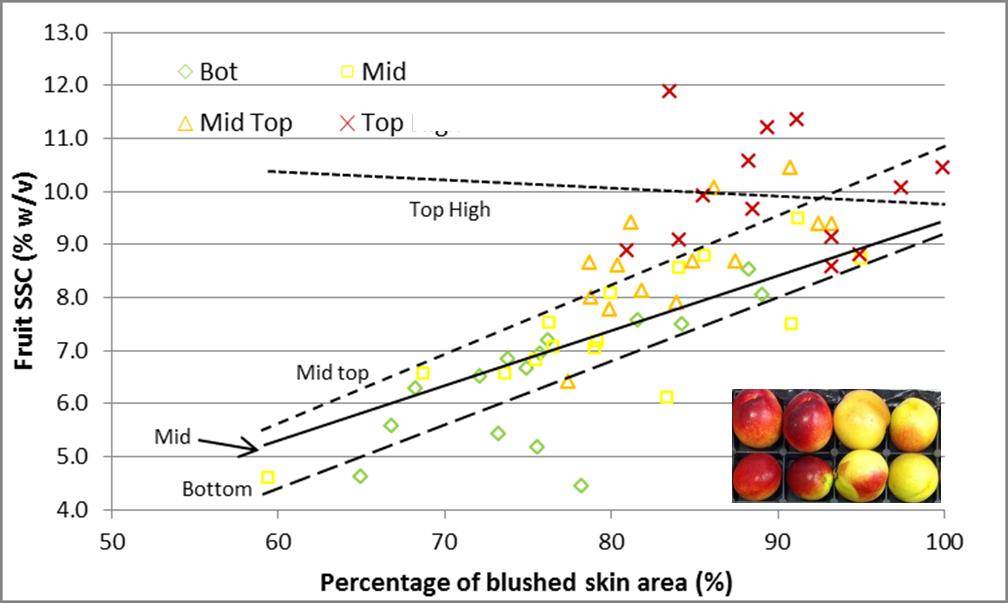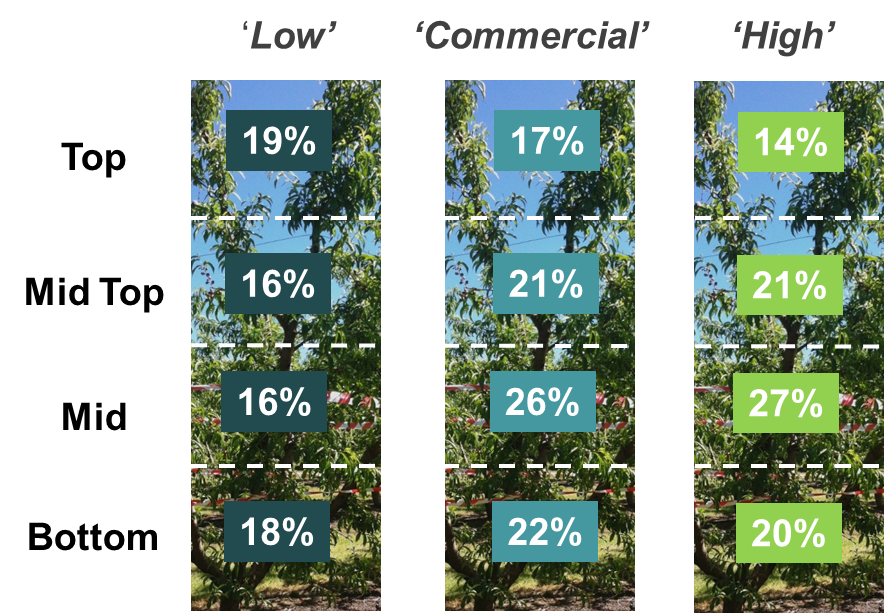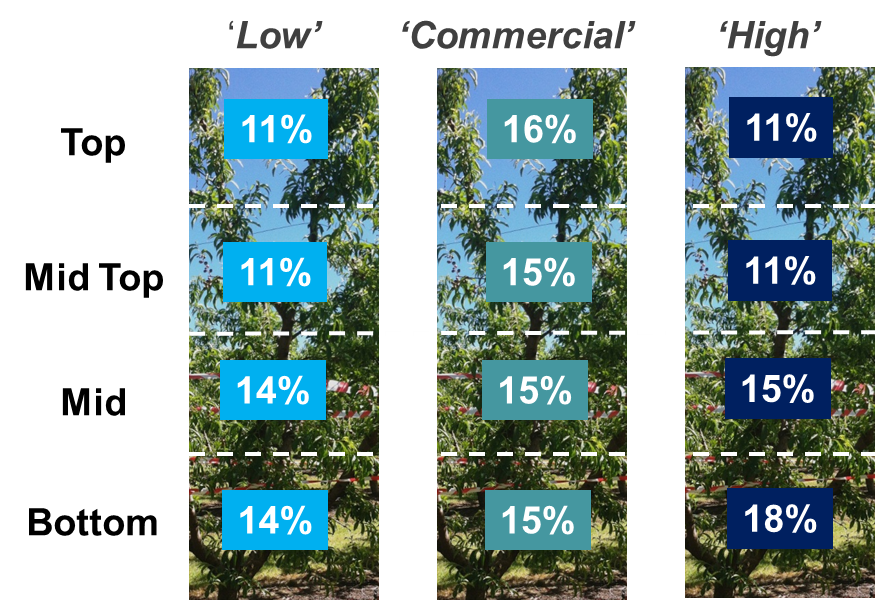Thinning and tree management strategies for improving fruit quality
- Fruit thinning based on a uniform leaf-to-fruit ratio along scaffold limbs rather than based on number of fruit per fruiting branch (e.g., If fewer fruiting branches at the top of tree then leave more fruit per branch)
- Earlier fruit thinning (fruit diameter < 15mm) to maximise cell number in fruit flesh, and thus fruit size at harvest
- Maximise fruit number higher in trees and reduce number at the base to improve uniformity of leaf-to-fruit ratio
- For new plantings reduce tree size (e.g., Spanish vase training) and rootstock vigour, and increase planting density to maintain yield
- For open vase trees – train to a more open center to maximize light penetration at base of trees
- Adjust tree crop load to maximise fruit size and SSC if economically viable (i.e., if financial returns are higher for better quality fruit)
How does crop load and fruit position influence variability in Rose Bright nectarine quality?
Variability in nectarine and peach quality within trees
Consistent fruit size and high soluble solids concentration (SSC) in nectarines are important components of fruit quality and consumer acceptability. A high degree of variability within trees can be a major impediment to meeting consumer and export market requirements for consistent quality. Differences in weight among fruit within a tree can be greater than 100 grams, and SSC can vary by as much as 8% depending on cultivar and thinning practices. From a grower perspective, variability within trees can greatly impact on harvesting costs and the economic viability of fruit production. By modifying tree crop load, fruit thinning technique, fruit positioning and, tree size and training, growers may be able increase average SSC and size of fruit within trees whilst also decreasing fruit variability, and thus reduce the number of harvests.
Variability in fruit quality within trees has been linked to differences in duration and intensity of sunlight within the leaf canopy (i.e., resulting in variation in carbohydrate availability); leaf-to-fruit ratio that determines the degree of competition between fruit, and is influenced by crop load; degree of fruit exposure to sunlight; and differences in fruit maturity and growth rate. In most tree training systems greater duration and intensity of sunlight occurs higher in the tree, as is fruit exposure to sunlight. The effect of tree crop load, fruit position within trees, and fruit exposure to sunlight, on the degree of variation in fruit quality within trees has not been fully explored, particularly in early season cultivars with a relatively short growth period. To begin understanding the influence of these factors on fruit quality in an early-season cultivar, Rose Bright nectarine, an experimental trial was conducted in the 2013-14 season to explore the effects on fruit quality of tree crop load and fruit position on the tree. The key findings from this trial are described and potential tree management practices to improve fruit quality are discussed.
- Crop load and fruit position experiment using Rose Bright nectarine (Cobram)
- Fruit maturity at harvest using a DA meter
- Rose Bright yield and quality at harvest
- How does fruit size and SSC vary with crop load and tree height?
- How does fruit skin blush and tree height influence SSC?
- Improving fruit quality and reducing variability within trees
Authors: John Lopresti1, Dario Stefanelli1 and Alessandro Ceccarelli2
1Agriculture Victoria
2University of Bologna, Italy
